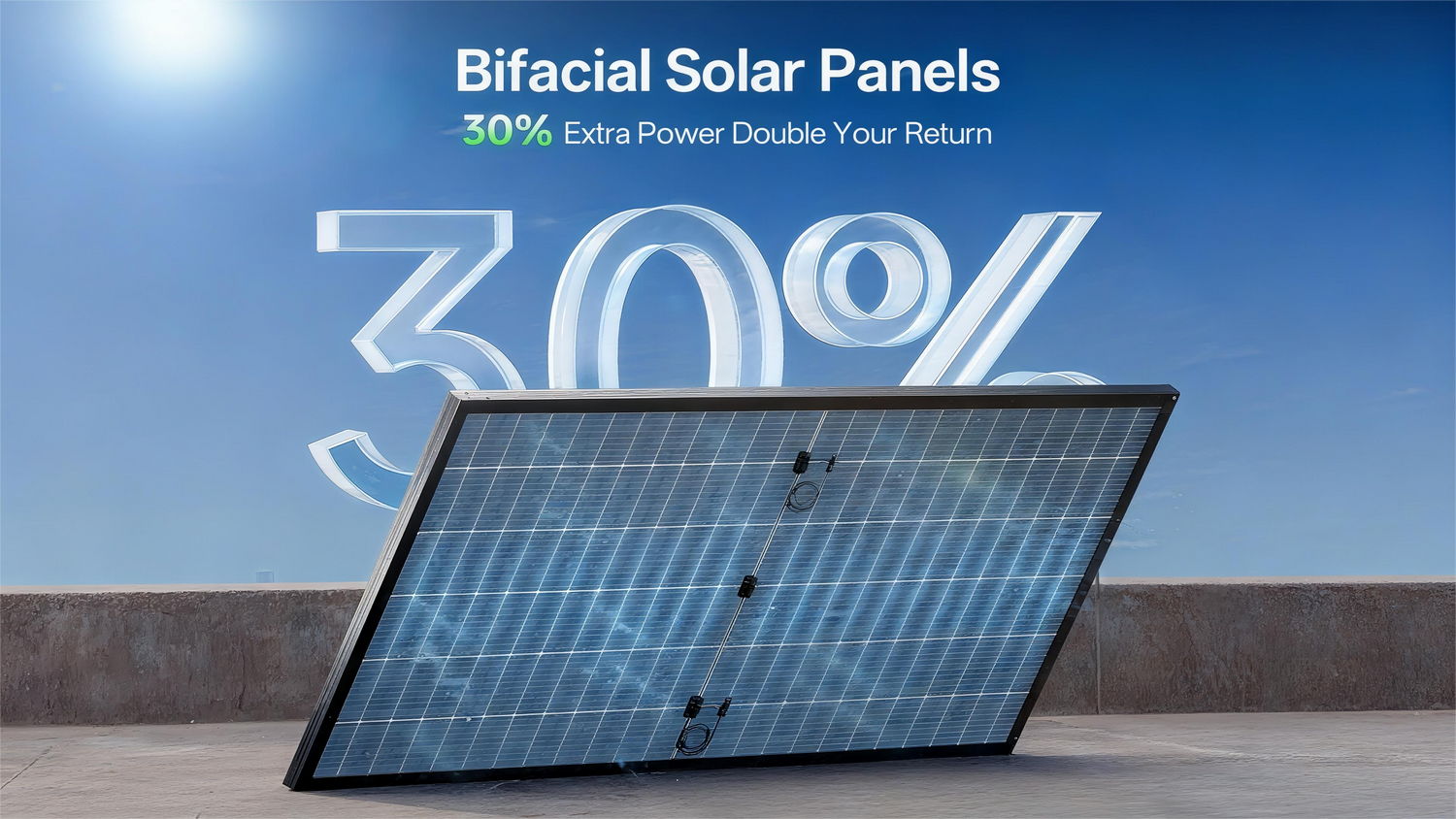Installing a solar energy system is a significant investment that requires meticulous planning to ensure optimal performance, maximum savings, and a seamless process. Rushing into a decision can lead to costly errors, such as miscalculating energy needs, forfeiting valuable incentives, or selecting ill-suited equipment for your specific location. To avoid these pitfalls, a structured and informed approach is essential. Proper preparation will facilitate a smoother installation and enhance your long-term financial return.
Key Mistakes to Avoid:
- Selecting solar panels incompatible with your regional climate and sun exposure.
- Inaccurately estimating your household's energy consumption.
- Overlooking local regulations, permitting, and advancements in technology.
- Failing to capitalize on available tax credits, rebates, and other financial incentives.
Key Takeaways for a Successful Installation:
- Conduct a thorough roof assessment to ensure it is in good condition and structurally sound.
- Perform a home energy audit to right-size your system and improve efficiency, avoiding overspending.
- Secure financing and understand incentives, particularly the 30% federal investment tax credit (ITC), which significantly reduces upfront costs.
- Research local rules, permits, and HOA requirements to prevent project delays and compliance issues.
- Select a qualified and reputable installer by comparing quotes, verifying credentials, and reading customer reviews.
Comprehensive Roof Assessment
Your roof is the foundation of your solar array. Its condition, orientation, and structure are paramount to the system's viability, efficiency, and longevity.
- Roof Condition and Age: Solar panels are a 25-30 year investment. Your roof should have a comparable lifespan. If your roof is over 10 years old or shows signs of wear, consider a replacement before installation. The cost and hassle of removing and reinstalling panels for a roof repair later far outweigh doing it upfront.
- Orientation and Tilt: In the Northern Hemisphere, south-facing roofs capture the maximum sunlight throughout the day. East and west-facing roofs are still viable but may produce 10-15% less energy. The ideal tilt angle is roughly equal to your geographic latitude for year-round production.
- Structural Integrity and Weight Capacity: Your roof must support the additional load of the solar panel system, which typically adds 3-4 pounds per square foot. A structural engineer or qualified installer must verify that your roof's framing can handle this dead weight, plus local live loads from snow and wind.
- Shading Analysis: Obstructions like trees, chimneys, or adjacent buildings can drastically reduce system output. A professional will perform a shading analysis across different seasons to position panels where they will receive uninterrupted sunlight for the majority of the day.
- Material and Drainage: The roofing material (e.g., composite shingle, metal, tile) affects the installation method. Furthermore, the installation must not compromise the roof’s drainage paths or waterproofing. Flashing and seals must be installed correctly to prevent leaks.
Energy Usage Analysis and Efficiency Upgrades
Sizing your system correctly begins with understanding your energy consumption and minimizing waste.
- Home Energy Audit: A professional energy audit identifies areas of energy loss in your home, such as poor insulation, air leaks, or inefficient appliances. This is the most critical step for determining your actual energy needs.
- Efficiency Upgrades First: Implement the auditor's recommendations before sizing your solar system. Upgrading insulation, sealing ducts, switching to LED lighting, and installing appliances reduce your overall energy load. This means you can install a smaller, less expensive solar system to meet your reduced needs.
- System Sizing: Analyze 12 months of utility bills to calculate your annual kWh usage. Your installer will use this data, combined with local sun hours and system efficiency factors, to design a system that offsets 90-100% of your consumption, avoiding the expense of an unnecessarily large system.
Financial Planning: Costs and Incentives
Understanding the full financial landscape is key to realizing a strong return on investment.
- Upfront Costs: The gross cost of a residential solar system typically ranges from $2,000 to $50,000. This varies based on system size, panel quality, and location.
- Federal Investment Tax Credit (ITC): This is the most significant incentive. Through 2032, you can deduct 30% of the total installation cost from your federal income taxes. This reduces the net cost to approximately $18,00 to $38,000. There is no upper limit on the credit value.
- Financing Options:
- Solar Loans: Allow you to own the system with little or no money down while claiming the tax credit. You make monthly payments but benefit from the system's full value and energy savings.
- Solar Leases/PPAs: Require no upfront cost, but a third party owns the system. You pay a fixed monthly lease rate or a per-kWh rate (Power Purchase Agreement) for the electricity. You do not own the assets or qualify for the tax credit.
- State and Local Incentives: Many states and utilities offer additional rebates, performance-based incentives, property tax exemptions, and sales tax exemptions. These can substantially lower your net cost and improve payback time. Research programs specific to your state and utility provider.
Navigating Local Regulations and Permits
Compliance with local codes is non-negotiable and requires due diligence.
- Zoning Laws and Aesthetic Rules: Municipalities may have restrictions on where panels can be placed (setbacks from roof edges), how high they can be, and whether they must be shielded from street view. Some historic districts have very strict guidelines.
- Building and Electrical Codes: Permits ensure the installation meets all safety standards for structural integrity, electrical wiring, and fire code. This includes requirements for firefighter access pathways on the roof.
- Homeowners Association (HOA) Approval: If you live in an HOA-governed community, review your covenants and seek approval early in the process. Most states have "solar access rights" laws that limit an HOA's ability to outright deny an installation, but they can often enforce reasonable aesthetic guidelines.
- Interconnection Agreement: Your installer will typically handle the application to connect your system to the utility grid (net metering). This agreement governs how you are credited for excess energy you export.
Selecting a Qualified Installer
Your choice of installer is as important as your choice of equipment. They will be your guide through the entire process.
- Compare Multiple Quotes: Obtain detailed proposals from at least three certified installers. Compare not only the total price but also the equipment brands, warranty terms, and projected energy production.
- Verify Credentials: Ensure the company is properly licensed (check for a state contractor's license), insured (liability and worker's compensation), and certified by leading industry organizations like the North American Board of Certified Energy Practitioners (NABCEP).
- Check Reviews and References: Research the company on the Better Business Bureau (BBB), Google, and solar-specific forums. Ask for references from recent customers and inquire about their experience with the installation process and post-installation support.
- Avoid Red Flags: Be wary of high-pressure sales tactics, door-to-door "too-good-to-be-true" offers, or companies that cannot provide proof of licensing and insurance. A reputable installer will be transparent, educational, and willing to answer all your questions without pressure.
By methodically addressing each of these critical areas, you will be exceptionally well-prepared to move forward with your solar installation confidently, ensuring you maximize your energy production, financial savings, and overall satisfaction with your renewable energy system.



